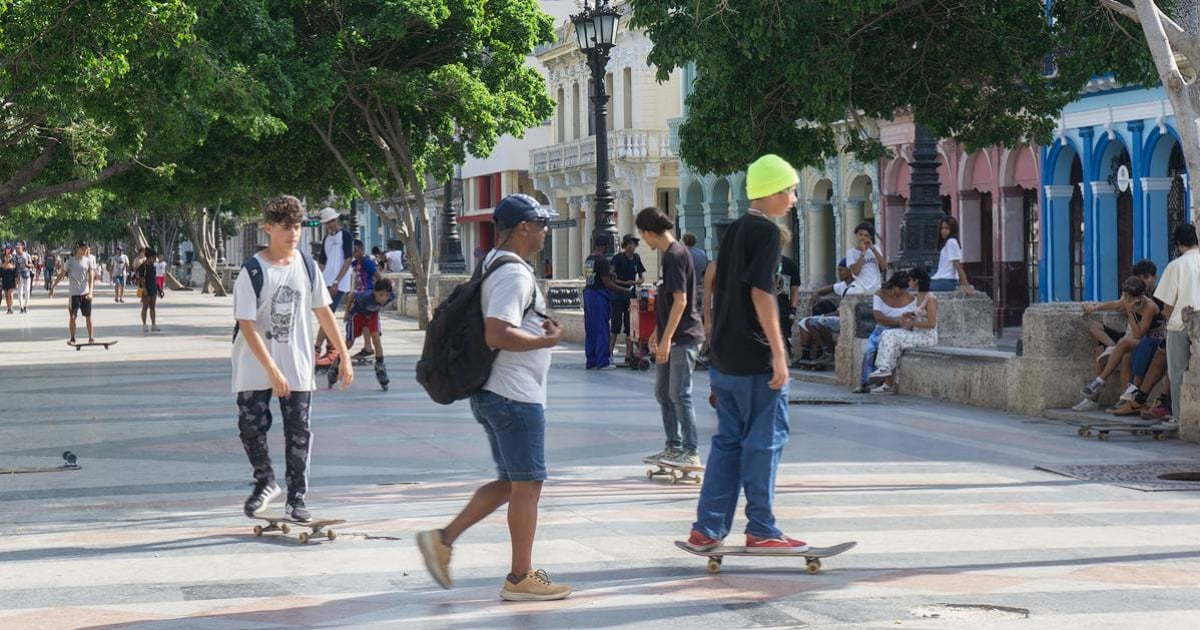
The Cuban Government recognized the increase in drug consumption in the country and the damage caused by the "chemical", a popular narcotic on the island that is sold at very low prices and affects increasingly younger people.
Colonel Juan Carlos Poey, who heads the specialized anti-drug body of the Ministry of the Interior, explained in statements to the television program "We make Cuba"that there are drugs in the country and that Cuba's geographical position is a key factor for the relatively easy entry of merchandise.
"Despite not being a drug producer, the location of The island places it at a strategic point between the countries of origin of these substances and the main consumption destinations, such as the United States.", he pointed.
According to Poey, operations against drug trafficking on the high seas have revealed a worrying reality: drug caches are often thrown into the sea and, carried by currents, reach the Cuban coast.
This is especially observed in the north of provinces such asGuantánamo, Holguín, Las Tunas, Camagüey and the northern keys of Ciego de Ávila in the east of the country. In the western part, the landing points are concentrated mainly in Mariel, province of Artemisa, and in areas such as Pinar del Río, the special municipality of Isla de la Juventud and the Ciénaga de Zapata in Matanzas, he explained.
The officer also explained that CubansResidents abroad have tried to introduce drugs by sea and air, mainly in the western part of Cuba. In 2023, three operations of this type were intercepted, he noted.
Regarding detection capacity, Poey stated that Cuba has the technology and trained personnel to detect the entry of any type of drug into the country. Likewise, the province with the highest consumption is Havana.
On the other hand, Dr. Alejandro García, a specialist in psychiatry and community mental health, warned about a worryingtrend towards a decrease in the age of initiation of drug use, which is now between 13 and 14 years, and an increase in it in women, many of them pregnant.
This trend, according to García, is global but was not previously reflected in Cuba as it is now, and is aggravated by thepolydrug consumption phenomenon, that is, the mixture of different substances, which makes clinical cases more complex.
García also highlighted the low perception of danger in Cuban families and called for them to be attentive to the symptoms of intoxication that usually manifest as a result of drug consumption in adolescents.
The majority of consumption, 99%, occurs outside of schools, which is why we urge families to report and break the cycle of drug distribution. However, many Cuban families do not have a risk perception of the phenomenon because they think that the phenomenon exists "but it will not touch me," he explained.
Likewise, he addressed the issue of the synthetic cannabinoid, known as "the chemist", which is sold at low prices on the island and has become the fashionable drug. He recognized that intoxicated patients arrive at hospital guards and are difficult to care for because they consume without knowing the components of the product.
Regarding preventive measures, the Vice Minister of Education, Eugenio González, assured that Cuban schools have a diagnosis and characterization protocol to detect possible cases of drug use among students and teachers.
He stressed the importance of parent meetings as a space to raise awareness in the community about this problem and highlighted that, although the cases in schools have been specific, it is essential that educational institutions become scenarios for risk identification.
Last year, and after the murder of a two-year-old girl by her stepfather allegedly under the influence of the substance known as "the chemical", residents of Luyanó denounced the increase in drug consumption in that Havana municipality, and published names and addresses of sellers of this substance.
After several police raids, the regime reported at the end of the year that "almost 700 people were arrested in Cuba for drug trafficking in 2023"; But Cubans denounce that drugs are sold at very low prices in the eyes of the inefficient police.
Publications on social networks reveal the magnitude of the phenomenon, with videos of young people completely out of control due to drug abuse.
The most popular is "the chemical", cheaper than a pound of sugar, and a substance mixed with various products that is sold at low prices. It is based on cannabis and is smoked in cigarettes as if it were simple marijuana.
However, consumers are not sure about its other components, one of them told Cubanet that the drug is prepared with epilepsy pills, formalin and anesthesia for animals.
The Cuban government does not publish the numbers of people affected or deaths related to drugs.
What do you think?
COMMENTFiled in: